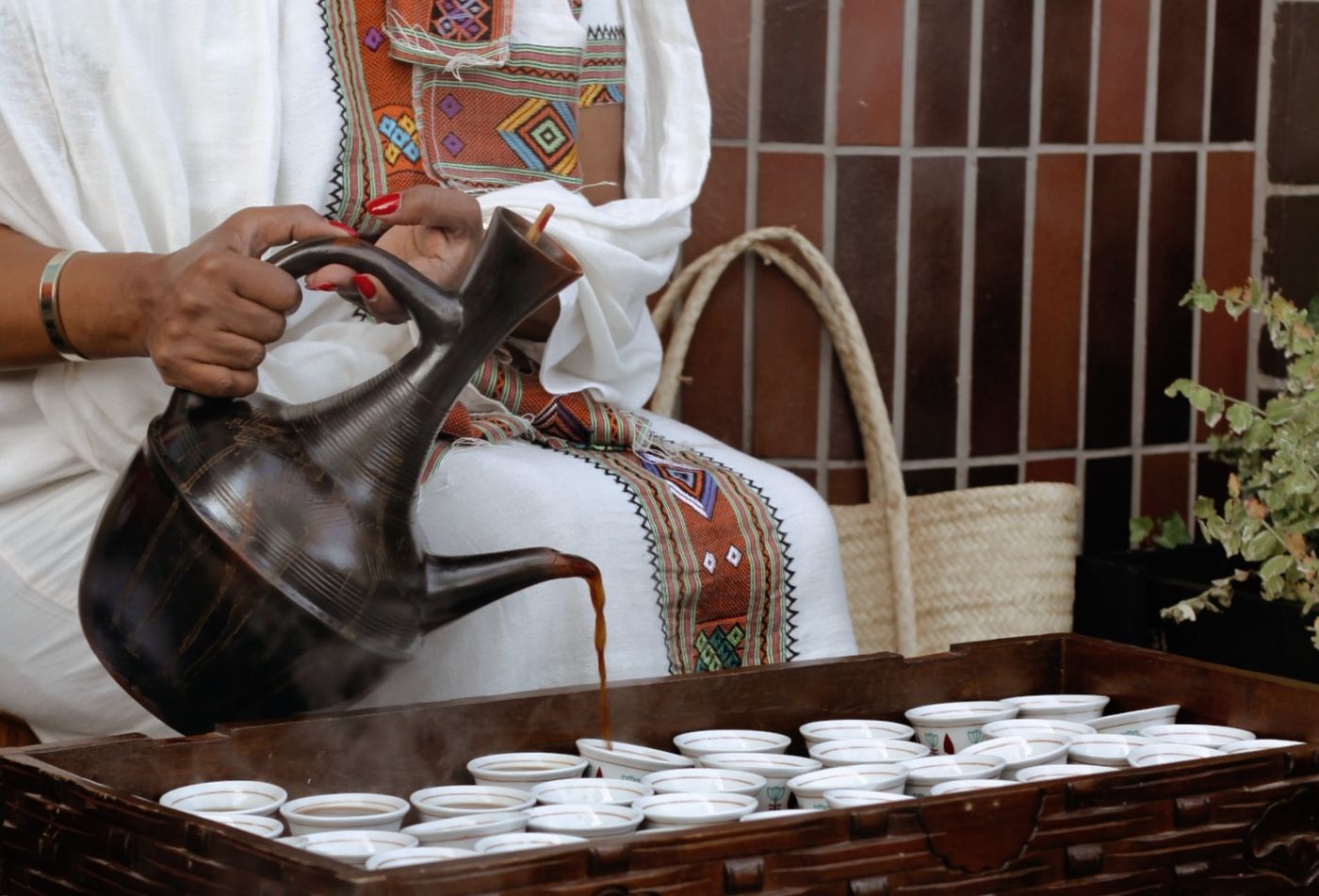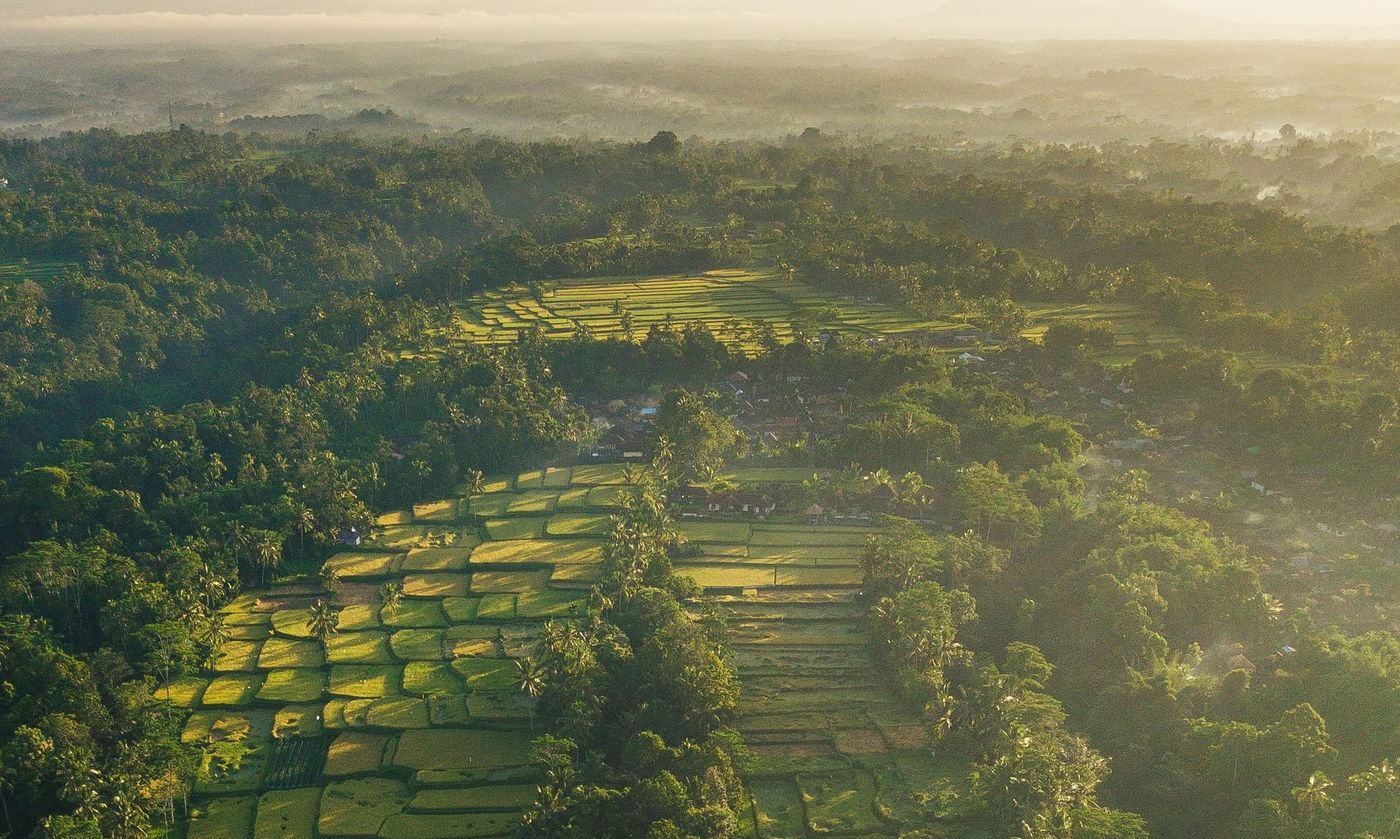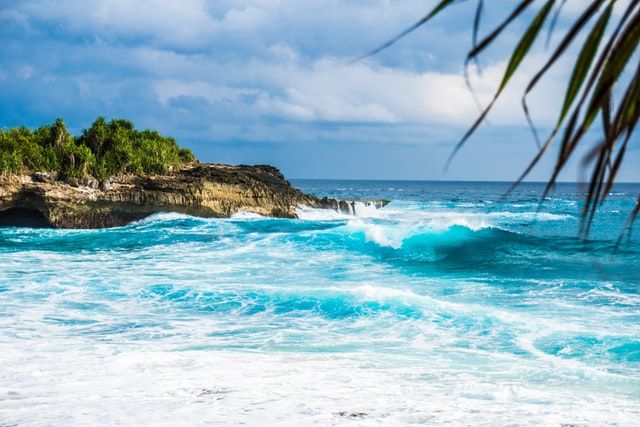[Unlocking the Coffee Ecology] #5 Mysterious Zone/Coffee and their Origin
For centuries, people have been growing coffee in the area between the Tropic of Capricorn (23.26°S) and the Tropic of Cancer (23.26°N). This area is called the "Coffee Belt" (like the belt of the earth). Countries belonging to the coffee belt are basically tropical areas close to the equator, which are divided into four major production areas: America, Africa, Asia, and island areas.
Let’s travel together about coffee and its production areas~ The production area is fast~



➊ America 🥜🍫
The Americas, also known as Latin America, includes countries in Central and South America.
Production accounts for 60% of the world. The production season in the Southern Hemisphere is from May to November, including Brazil and Ecuador. The production season in the northern hemisphere runs from October to March next year, including Guatemala, Honduras, Costa Rica, etc. Most coffee grown in the Americas has nutty and cocoa flavors and low acidity.
Countries include: Mexico, Costa Rica, El Salvador, Guatemala, Honduras, Nicaragua, Panama, Colombia, Brazil, Ecuador, Peru, Bolivia
🇧🇷Brazil
Main harvest time: April to September
When talking about Brazil, in addition to football, there is also coffee! Brazil is currently the world's largest coffee producer, accounting for about one-third of the world's total output. Brazil's annual coffee output has a huge impact on global coffee prices.
There are approximately 27,000 square kilometers of coffee plantations in Brazil, mainly distributed in the states of Minas Gerais, Sao Paulo and Paraná in southeastern Brazil. Unlike other production areas, Brazil has a lower altitude, flat landform , and lack of microclimate. However, Brazil can grow coffee with low acidity, balanced sourness and bitterness, and a mellow taste. It is indeed a coffee land blessed by nature!
🇨🇴 Colombia
Main harvest time: September to January (another harvest: March to June)
Colombia is one of the most popular destinations for coffee buyers around the world as they typically have two harvests per year. The country cuts directly through the Andes , creating many peaks and valleys that in turn create diverse growing conditions in each region. From delicate citrus to rich berry flavors, there's a wide variety of flavors available in just one country or region.
🇸🇻 El Salvador
Main harvest time: October to February next year
El Salvador once produced mainly indigo, the plant that produces dark blue dye, but with the invention of chemical dyes in the mid-19th century, the country had to find new crops to sustain its economy. Fortunately, they invested in the coffee industry, built roads, ports, and railways, and gradually began to produce high-quality coffee. El Salvador is the hometown of Pacas, and Pacamara has become one of El Salvador’s representative coffees.
🇬🇹 Guatemala
Main harvest time: October to February next year
Guatemala is one of the largest coffee producers in Central America and has been growing coffee for more than 150 years. Simply transporting coffee beans from farm to factory to port is already a huge challenge, given that most growing areas are located in rugged and steep terrain.
Most coffee in Guatemala is shade grown and washed. The most common growing areas are Antigus, Huehuetenango, Coban, San Marocs, Atitlan and Frayjanes ( Fraijanes).
🇳🇮 Nicaragua
Main harvest time: October to February next year
In the 19th century, the Nicaraguan government heavily subsidized investors to aid the development of the coffee industry, which helped international buyers purchase local farms to produce coffee. However, this has resulted in local people not being able to benefit. In recent years, producers have also had to contend with policies, natural disasters and dramatic fluctuations in global coffee prices, putting the Nicaraguan coffee industry at risk . To this day, Nicaragua still has a lot of potential that has yet to be fully explored.
🇵🇦 Panama
Main harvest time: October to February next year
Panama was not well known in the coffee world, and they produced very little coffee and have been unable to break into the international market. One of the most unfortunate events was a fungal outbreak in the 1960s that killed most of their plants, and the entire coffee world scrambled to find a solution. Geisha seeds were desperately smuggled out of Costa Rica because it was thought that geisha was resistant to the fungus.
In 2004, the first Gesha variety won the Panama auction's best result and sold for a record price of $20 per pound, and in the 2020 Best of Panama competition, the Gesha became the most expensive at the time at $1,300 per pound. coffee beans. Panama’s high slopes and rich volcanic soil became the ideal combination for growing this amazing variety, making Panama today the symbol of extremely high-quality Geisha coffee.

➋Africa🌹🍋
Africa can also be called Africa and Arabia. Production accounts for 30% of the world. The production season is from October to March next year. Most of the coffee grown in Africa has floral and fruity flavors. African coffee is generally more acidic due to the acidic soil.
Countries include: Ethiopia, Kenya, Uganda, Tanzania, Burundi, Congo, Rwanda, Malawi, and Yeman
🇪🇹 EthiopiaEthiopia
Main harvest time: October to February next year
Ethiopia is considered the birthplace of coffee and has the widest range of coffee genetic variation in the world. Most coffee comes from small farmers, where coffee grows in a wild or semi-wild state in fields, forests, or backyards.
Once farmers pick the coffee berries, they usually sell them the same day and before processing. Since some factories cannot classify by variety, many coffees from Ethiopia are directly referred to as "native varieties of Heirloom".
In fact, coffee beans produced in Ethiopia generally have naming problems. Many are named after local names, such as: Yirgacheffe, Kochere, Chelelektu, Wush Wush... Next time, don’t mistakenly think that this is the variety. Sometimes, it just explains where it comes from.
🇰🇪 Kenya
Main harvest time: October to February next year (another harvest: April to July)
The African country of Kenya produces unique coffee. Most coffee is washed with water , and a variety of tree species have developed. Kenyan coffee is usually rich in flavors such as lemon, black currant, and dark plum with high acidity. Local coffee is produced by small farmers, estates and cooperatives.
Kenyan beans are graded based on size rather than quality , with larger beans listed as AA, followed by AB, C, PB, etc. This helps ensure a consistent coffee flavor profile.
🇷🇼 Rwanda
Main harvest time: March to August
Rwanda began growing coffee as early as the Belgian colony in the 19th century, and coffee became one of the earliest exported crops. Until the mid-to-late 1990s, a brutal civil war plunged the country into turmoil , destroying many lives and local industries. After 2000, Rwanda received international aid, including significant investment in the coffee industry , and in 2004 it established its first washing station. The stunning terroir and climate continue to make Rwanda a fantastic coffee destination.

➌Asia🪵🌳
Asia, also known as Asia/Pacific Area, so some people include Hawaii. Production accounts for 10% of the world. The production season is from May to February next year. Coffee generally has herbal and earthy flavors.
Countries include: Papua New Guinea, India, Indonesia, Java, Sumatra, Thailand, Yunnan, China, Vietnam, Taiwan
🇮🇩 Indonesia Indonesia
Main harvest time: May to October
Indonesia (Indonesia) is located in Southeast Asia and consists of 17,506 islands. It is the largest archipelago country in the world. Although Indonesia has a large coffee production, most of it is Robusta coffee beans, and the proportion of specialty coffee is still low. Indonesia is famous for its wet-hulling process, which produces low acidity, earthy, and rich flavors.
When you mention "Indonesian coffee", you may think of "Mandheling". In fact, Mandheling is neither a place name nor a species, it is just the ethnic group living in Sumatra - Mandheling.
It is said that during the Japanese occupation of Indonesia in World War II, Japanese soldiers drank this extremely fragrant coffee. When asking the name of the coffee, the boss mistakenly thought that the other party was asking where he was from, so he replied: "Man~dai~ning~", Since then, "Mandheling" has become synonymous with this type of rich, strong, herbal flavored coffee with low sweetness and low acidity.
The coffee system in Indonesia is very complex and chaotic. What is now called "Mandheling" mainly refers to the coffee that grows near north-central Sumatra. Just like some coffee trees are planted near Xiao Ming's house, then the coffee in this area is collectively called "Mandheling". It feels like "Xiao Ming Coffee". Since coffee grows in Sumatra, some people simply name it after the region, calling "Mandheling" "Sumatra coffee beans (Sumatra)".
Simply put, Mandheling = Sumatra = coffee with a strong, earthy flavor.
🇵🇬 Papua New Guinea PNG
Main harvest time: April to September
Papua New Guinea's steep plateaus in the east and west are dotted with many small coffee farms, all of which provide a substantial income for the entire country.
Although transportation remains the biggest issue , with limited road infrastructure to remote farming communities, the high altitude combined with the equatorial climate can produce coffee with extremely high potential.
Papua New Guinea used to offer honey-processed and sun-dried coffee, but now most coffee from PNG is washed.
🇹🇼 Taiwan Taiwan
Taiwan is located at 23.58°N of the Tropic of Cancer, which is considered to be on the edge of the "Coffee Belt". Coffee grown in Taiwan is generally only sold locally and in neighboring areas, and is rarely seen in overseas markets.
Initially, 100 Arabica coffee plants were introduced from Manila in 1884 by a tea merchant from the British businessman Tak Kee. They were first planted in the Haishan area of Taipei. The following year, seeds were imported and planted near Lengshuikeng and Xizhi in Wenshan. In its heyday, the planting area in Taiwan was nearly 1,000 hectares, mainly distributed in areas such as Chiayi Hongmaobei, Yunlin Gukeng Hebaoshan, Hualien Ruisui, and Taitung Senyong. Currently, Taiwan's coffee-producing areas are mainly from Taichung to the southern region, with Alishan and Nantou being the most famous.
In the 2021 Alishan Coffee Auction, Taiwan's Alishan Baixiang Manor was sold for NT$430,000/5kg, which is comparable to the price of the world's most iconic BOP Geisha . I believe Taiwan is a very potential producing area.

➍ Island 🏝
In the past, there were only three major production areas, but in recent years, island areas have also begun to be divided. "Island" production areas usually refer to Hawaii and the Caribbean production areas.
🇯🇲Jamaica
The production season in Jamaica is from August to September and is famous for its Blue Mountain coffee beans . Due to the short production period, Blue Mountain coffee beans are so precious. The Blue Mountains have some of the steepest terrain in the world, which combined with soil composition, cloud cover, and slow ripening rates all make Blue Mountain coffee so unique.
It is often described as "silky smooth, balanced, full-bodied, sweet and creamy, with a rich mouthfeel". It has a unique chocolate flavor without any bitterness and is full of sweet vanilla and nutty flavors. At that time, Louis XV also called it "the best coffee in the world" and the best coffee.
🥥Hawaii
Hawaii is currently the only coffee-producing region located in a developed country. Most coffee is grown in the Kona producing area on the big island. Although the altitude here is not high, due to the special island climate and Hawaii's rich volcanic soil, the quality of the coffee produced is also very high. Even within the same estate, coffee develops different flavors due to differences in altitude, rainfall and soil acidity.
Hawaiian coffee generally has a silky smooth and round flavor, with a unique sweetness and rich aroma. The production season is from August to January next year.
The flavor of coffee not only depends on the variety, but also shows different regional flavors (terroir) due to the planting area, soil, climate, water and soil, etc. This is also one of the elements that specialty coffee values.
Today’s focus: "Latin American beans are more nutty and cocoa", "African beans are more fruity and sour", "Asia is more herbal and earthy" and "Islands don’t have any specific flavor", that’s it!
Preview of the next episode: Why are coffee producing areas concentrated in tropical areas near the equator? What are the ideal growing conditions for coffee? Can coffee be grown outside the coffee belt? Next time, let’s continue to unlock the coffee ecosystem together!
If you have any questions, feel free to ask~ (If it helps you, don’t forget to clap and tip. I’m still counting down to become an appreciative citizen~Thank you~♥)


Want to learn coffee from scratch, but don’t know where to start? Want to sign up for a coffee course but think it’s too expensive? Want to learn coffee by yourself, but you’ve learned a lot about it?
"Unlocking the Coffee Ecosystem" allows everyone to learn coffee from scratch in a simple and easy-to-understand way, and systematically learn coffee knowledge from a relaxed and interesting perspective. Although it is not a certificate course, the content is definitely beyond the certificate course, and it is free! ▶Unlock now
Keep up with the latest coffee trends丨Coffee Ecology▶Major coffee ecology platforms: https://linktr.ee/heycoffeeanimal
▶ Other publications: "Barista Growth Diary" "Unlocking the Coffee Ecosystem"
▶ Welcome letters for business cooperation: heycoffeeanimal@gmail.com
Like my work? Don't forget to support and clap, let me know that you are with me on the road of creation. Keep this enthusiasm together!



- Author
- More